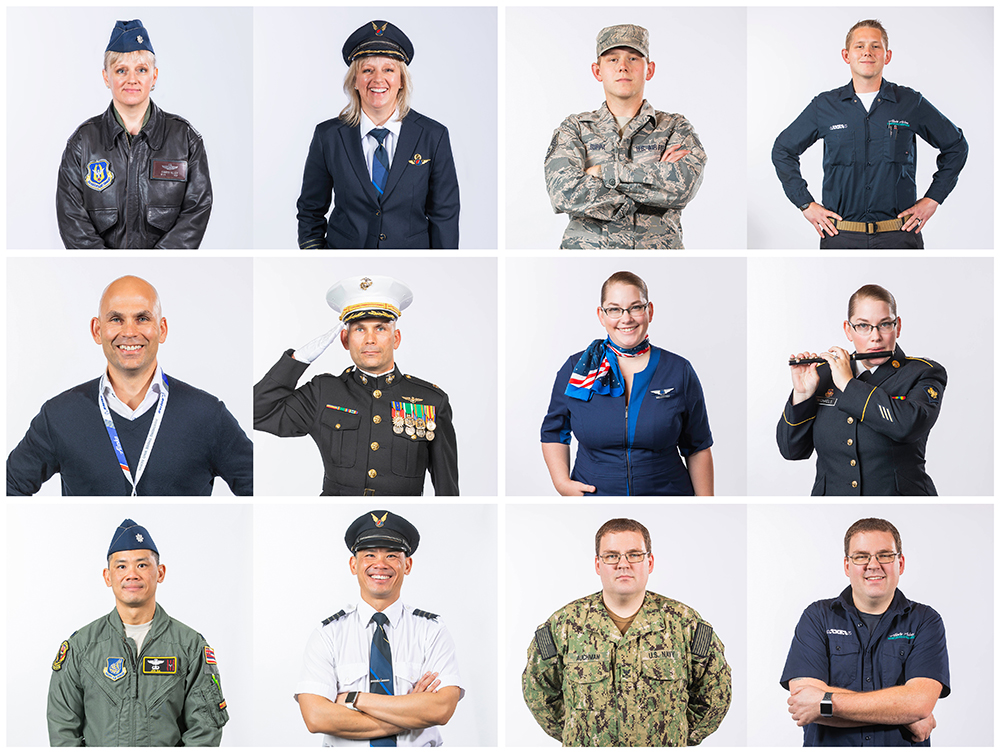Balancing work and duty: Stories from those at Alaska who serve in the military reserves
Share

Pilots, aircraft technicians, flight attendants – employees throughout Alaska and Horizon – balance full-time work schedules with service in the military reserves and National Guard.
Photos by Ingrid Barrentine.
Lt. Col. Jennifer Kelsey has piloted an Air Force C-130 transport to the tiny Azores islands in the middle of the Atlantic, dropped fire retardant from an air tanker flying low over mountain wildfires and landed a C-17 behemoth in the subzero blackout of midwinter Antarctica.
She also has the calm captain’s voice you might hear from the 737 flight deck on your next Alaska Airlines flight out of Seattle.
Kelsey is among the many Alaska and Horizon employees who spend days off, and sometimes weeks or months at a stretch, serving in the reserves and National Guard. These pilots, aircraft technicians and flight attendants – members of every workgroup – balance full-time airline schedules with family and military duty. “The job juggle is real,” Kelsey says.
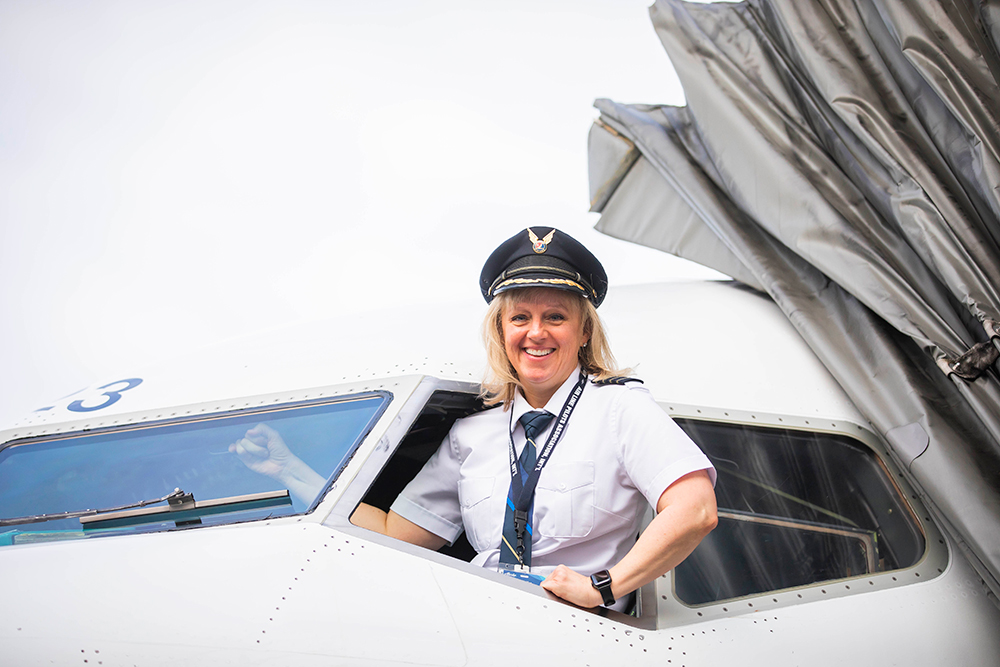
The dual commitment to country and company brings a depth of leadership experience to the airline, says Sonia Alvarado, Alaska’s director of labor relations and leader of the employee group that supports service members, veterans and spouses. “Veterans and reservists are team-first, mission-first,” Alvarado says. “They come from a world where a huge number of decisions are life-and-death. That can be grounding.”
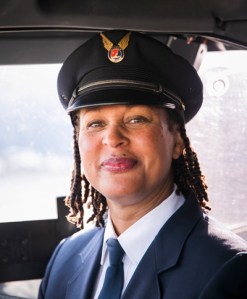
The military instills the resilience required for both jobs, says First Officer Kim Ford, who continued serving in the Air Force Reserve for 15 years while flying for Alaska, before retiring from the military in 2016. “We know how to take care of our people,” she says. “We know how to build a team of diverse backgrounds – not just race, but age and geography.”
Ford returned to active duty during the Iraq War, when she flew personnel and cargo to Europe and combat zones from 2003 to 2005. “We had the support of Alaska all the way,” says Ford, who ended her military career as a lieutenant colonel with 25 years of combined active and reserve duty. “It’s one of my proudest accomplishments.”
Pride in service runs deep at Alaska.
These are a few of the stories from those who serve.
—
JENNIFER KELSEY
Captain, Alaska Airlines | Lieutenant Colonel, Air Force Reserve, Joint Base Lewis-McChord
![]()
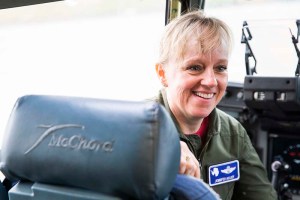 Kelsey grew up going to summer fly-ins in Oshkosh, Wisconsin, with her uncle, who encouraged her love for aviation. She saved up for flying lessons and did her first solo at 16 in a Cessna 150. Now, with 14 years of flying for Alaska Airlines and 23 years of serving in the Air National Guard and Air Force Reserve, Kelsey has flown aircraft that could swallow that two-seat Cessna whole. This fall, she’s taking a month away from her Alaska job to coordinate Air Force operations in New Zealand in support of National Science Foundation missions in Antarctica.
Kelsey grew up going to summer fly-ins in Oshkosh, Wisconsin, with her uncle, who encouraged her love for aviation. She saved up for flying lessons and did her first solo at 16 in a Cessna 150. Now, with 14 years of flying for Alaska Airlines and 23 years of serving in the Air National Guard and Air Force Reserve, Kelsey has flown aircraft that could swallow that two-seat Cessna whole. This fall, she’s taking a month away from her Alaska job to coordinate Air Force operations in New Zealand in support of National Science Foundation missions in Antarctica.
What’s it like to fly in Operation Deep Freeze?
 “Flying into Antarctica is amazing, challenging and unique. McMurdo Station is one of the most remote locations on the planet. We land on a runway that’s 10,000 feet long and is made by compacting snow. During winter flights, there are no runway lights or markings, just reflectors along the edges of the runway. We use night vision goggles to land during a time of year where the temps are as cold as minus 60 F, and the sun doesn’t rise for nearly four months.”
“Flying into Antarctica is amazing, challenging and unique. McMurdo Station is one of the most remote locations on the planet. We land on a runway that’s 10,000 feet long and is made by compacting snow. During winter flights, there are no runway lights or markings, just reflectors along the edges of the runway. We use night vision goggles to land during a time of year where the temps are as cold as minus 60 F, and the sun doesn’t rise for nearly four months.”
How hard is it to go back and forth between civilian and military jobs?
 “The hardest part is juggling your time. I think people would be surprised at how hard we work. A typical pilot flying the C-17 will work five days a month as a minimum, in addition to their full-time job at Alaska. Sometimes we fly in for Alaska in the morning and go straight to the base.”
“The hardest part is juggling your time. I think people would be surprised at how hard we work. A typical pilot flying the C-17 will work five days a month as a minimum, in addition to their full-time job at Alaska. Sometimes we fly in for Alaska in the morning and go straight to the base.”
What makes it all worthwhile?
“Everyone has their own reasons for joining the military, but most will say it all started with the desire to serve their country. The unique experiences you have, the places you fly, and the people that you fly with make it worth the journey and sacrifice. Flying for the military is like nothing else you’ll ever do. It’s completely different from airline flying, which you want to be routine. Military flying is full of challenges from air refueling to low-level flying, and some of our crews also do airdrop. For 14 years, I have worked two jobs, I’ve flown two different military aircraft, I’ve flown to every continent, and I’ve done it all with some great friends. For those reasons and for the honor of serving my country, it’s worth the juggle.”

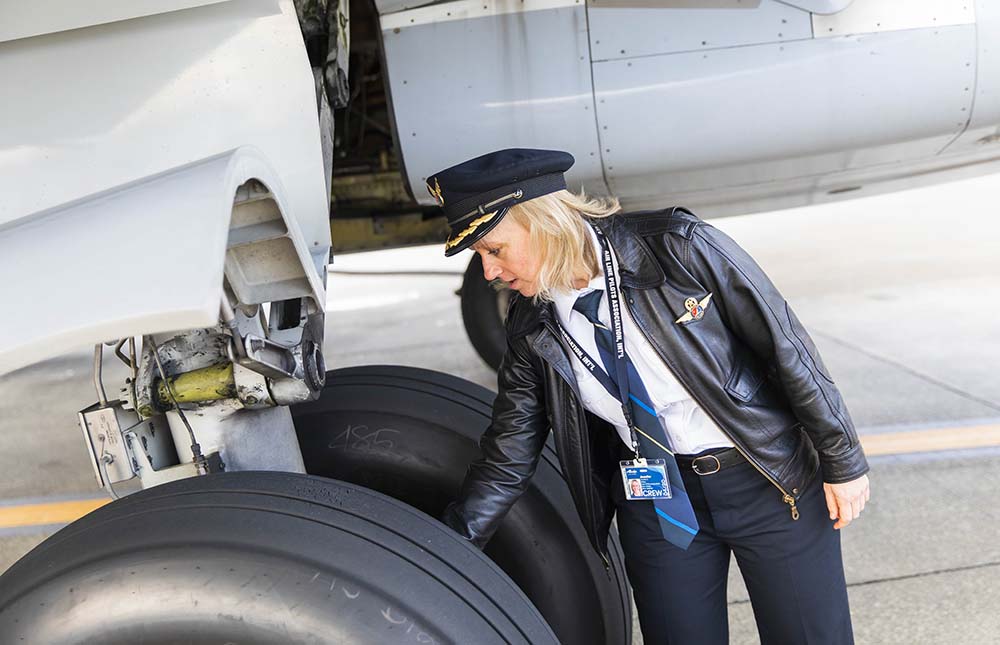
JACOB SUPPA
Aircraft Technician, Alaska Airlines | Technical Sergeant, Air Force Reserve, Joint Base Lewis-McChord
![]()
Suppa was a 19-year-old from Phoenix who wanted to learn how to work on planes, so he joined the Air Force. After basic training, he was assigned to be a crew chief. Suppa served four years of active duty starting in 2009, including a deployment overseas supporting U.S. troops coming out of Iraq. For the past five years, he’s repaired 737s on the overnight shift at the Seattle hangar—while continuing to serve in the Air Force Reserve. This fall, he moved into a new reserve role inspecting other crews’ work with the 446th Airlift Wing at JBLM. He and his wife, Katrina, are expecting their first child in 2020.
What are the challenges of working on both civilian and military aircraft?
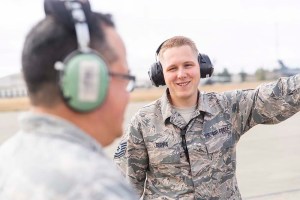
“Hands down, the hardest part is being proficient on the C-17. I work on airplanes on the civilian side, so I have a leg up on a lot of guys. Now, in my new job, I have a lot of experience that I can share with the younger guys. I can help them understand exactly what they’re doing and why they’re doing it.”
What do you enjoy about your work at Alaska?
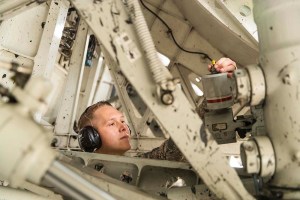 “We work on the planes all night, and then you get that instant satisfaction: The plane was broken when it came in, and you’re able to fix it. In the morning, we take our planes from the hangar to the gate. Twenty minutes later, passengers are getting on, and they’re off to Hawaii or wherever.”
“We work on the planes all night, and then you get that instant satisfaction: The plane was broken when it came in, and you’re able to fix it. In the morning, we take our planes from the hangar to the gate. Twenty minutes later, passengers are getting on, and they’re off to Hawaii or wherever.”
How do you juggle the commitments to Alaska, the Air Force and your family?
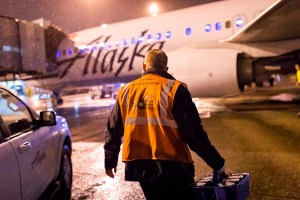 “You have to keep them all balanced. Alaska is helpful and pretty much allows me to take
my military time, no matter what. And my wife takes a lot of the burden, too. With the two of them, I have a pretty good support system. I would love to serve a total of 20 years. And as much as I love serving my country, I’m also looking forward to having a family and serving them.”
“You have to keep them all balanced. Alaska is helpful and pretty much allows me to take
my military time, no matter what. And my wife takes a lot of the burden, too. With the two of them, I have a pretty good support system. I would love to serve a total of 20 years. And as much as I love serving my country, I’m also looking forward to having a family and serving them.”
What makes your ongoing commitment to the Air Force worth it?
“In my early 20s, the military was my life, 100 percent. That’s just instilled in me. Most veterans carry the military with them forever. So, this is my way of still carrying it. I don’t even think twice about it. I just do it.”
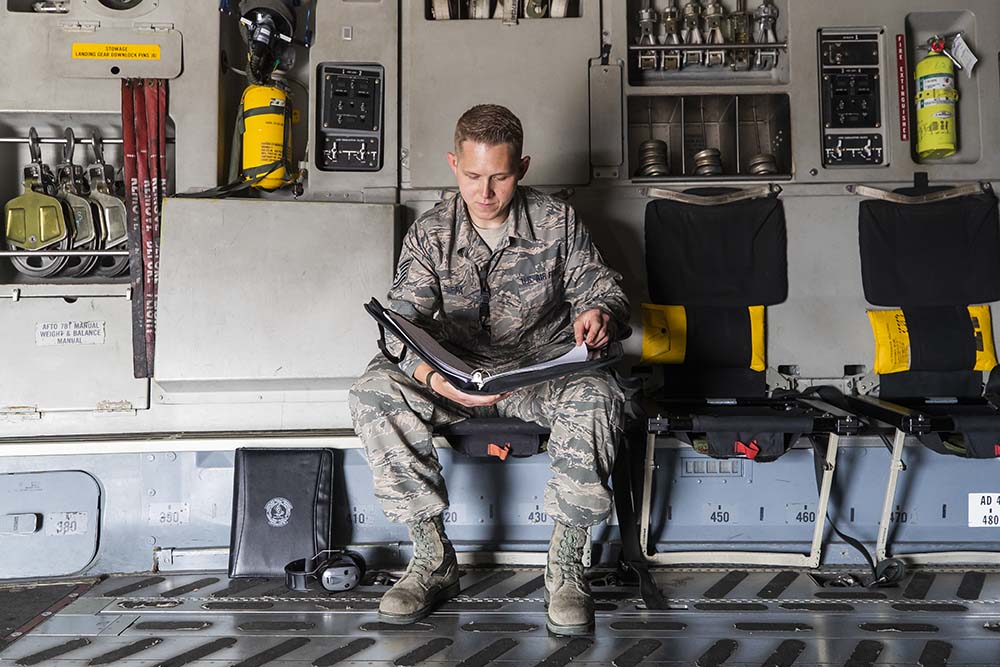
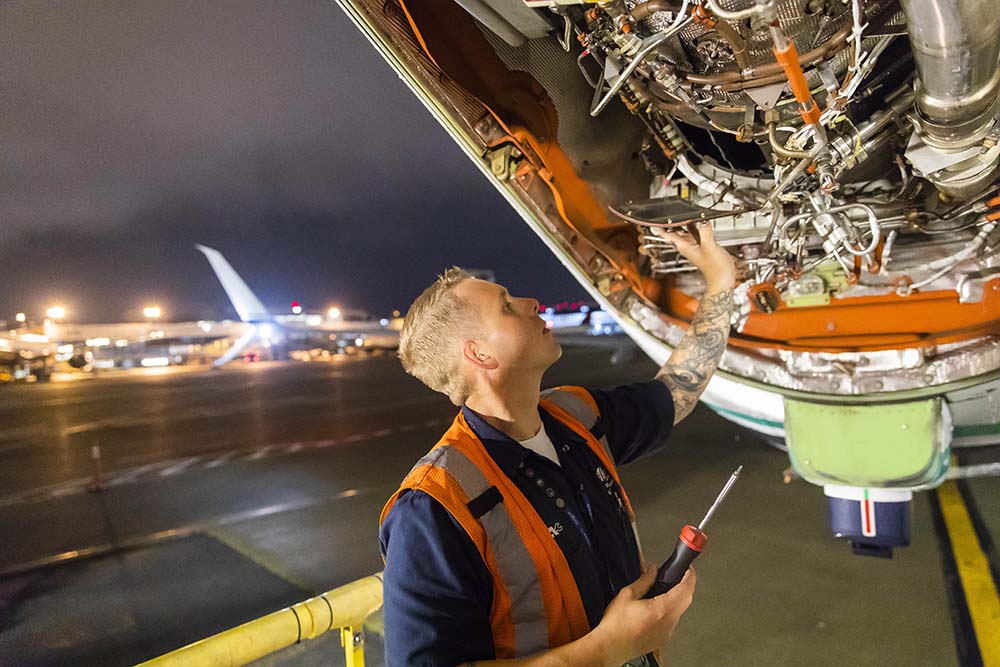
JON MA
First Officer, Alaska Airlines | Lieutenant Colonel, Hawaii Air National Guard, Joint Base Pearl Harbor-Hickam
![]()
Growing up in a military family in Honolulu, Ma fell in love with travel while still a child. After graduating from the Air Force Academy in 2001, he flew C-17 missions for 12 years, including operations in Iraq and Afghanistan. When he transitioned out of active duty, he transferred to the Hawaii Air National Guard, where he could continue serving for the military part-time in his hometown—and pursue a commercial airline career at the same time. He’s been flying for Alaska since 2014 and commutes from Seattle to his Honolulu home, where he serves as the Director of Operations for the Hawaii Air National Guard’s C-17 squadron.
Did you always want to be a pilot?
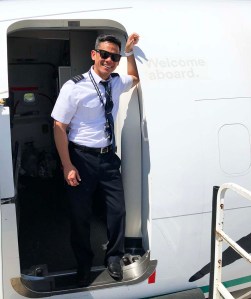
“When you grow up in Hawaii, you get a taste of living this great island life, and you get exposed to aviation so early. Going to visit relatives on the mainland, going to Disneyland or wherever, you get the travel bug. I’ve always enjoyed seeing new things. In becoming a pilot, the door just opened for me. And I still enjoy flying the C-17. It’s an exciting platform. You have to pinch yourself that you get paid to fly planes around the world.”
What kind of missions do you fly for the Hawaii Air National Guard?
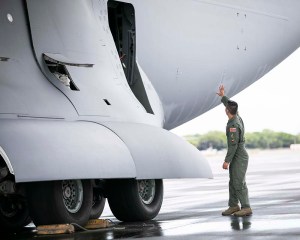 “We have a state mission responsibility, for example, in hurricane response. We also fly missions to India, Korea, Australia, Japan, Philippines and DPAA (Defense POW/MIA Accounting Agency) recovery missions in Vietnam and Laos, just to name a few—all operations inherent to our strategic location in the Pacific Theater.”
“We have a state mission responsibility, for example, in hurricane response. We also fly missions to India, Korea, Australia, Japan, Philippines and DPAA (Defense POW/MIA Accounting Agency) recovery missions in Vietnam and Laos, just to name a few—all operations inherent to our strategic location in the Pacific Theater.”
How do you juggle a full-time job in Seattle with your military responsibilities in Hawaii?
 “I bunch my Alaska flying time in a more compact schedule, just like other commuters commuting long distances. I work to be as efficient as possible to get my flying done for the company and my drills done for the Guard. It’s no different from a lot of reservists and Guardsmen you see throughout the company. They all have this commitment.”
“I bunch my Alaska flying time in a more compact schedule, just like other commuters commuting long distances. I work to be as efficient as possible to get my flying done for the company and my drills done for the Guard. It’s no different from a lot of reservists and Guardsmen you see throughout the company. They all have this commitment.”
How long do you see yourself doing both jobs?
“I’m coming up on 20 years, but I always tell everyone I’m having a great time. I’ll probably do both as long as the work-life balance allows. It’s all about carving out time.”
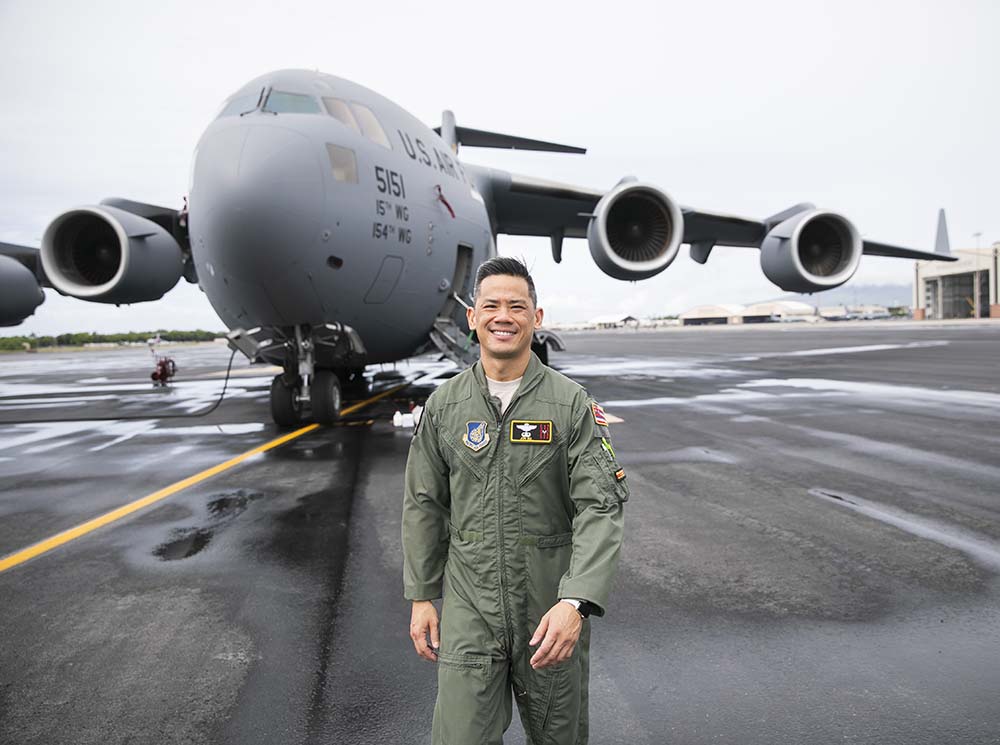
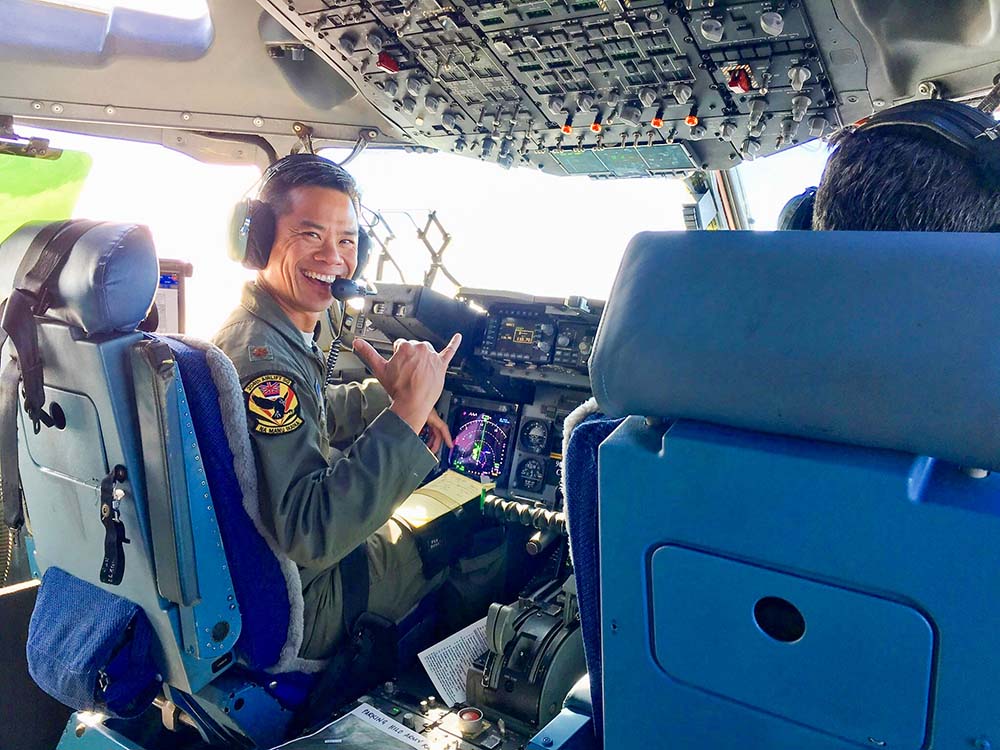 Photo courtesy Daniel Chun
Photo courtesy Daniel Chun
CLAIRE MICHAELS
Flight Attendant, Horizon Air | Specialist, Army Reserve, 204th Army Band, Vancouver, Washington
![]()
Michaels grew up with music. Her dad played trombone for 20 years in the Army National Guard Band, and Michaels picked up the flute when she was 10. After high school, she followed in her dad’s boot steps and enlisted in the Army Reserve to join the 204th Army Band. Michaels has 11 years of service in the reserves, six years of experience as a Horizon flight attendant, and now eight months as a new mom to a little boy named Maverick. She typically flies out of Paine Field in Everett, Washington.
What was it like joining the Army Reserve to play in the band?

“I went through the same basic training any soldier goes through, where the drill sergeants break you down and build you back up in the Army’s image. We all start off with that same experience before we specialize.”
Where does your unit typically play?
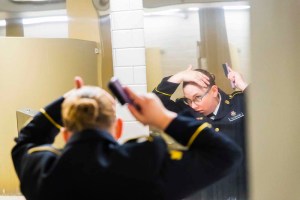 “We’ll perform in concert halls or high school gymnasiums, inside and outside. Rain, thunder, snow—it doesn’t matter. I’ve played for an audience of 12, and I’ve played for thousands.”
“We’ll perform in concert halls or high school gymnasiums, inside and outside. Rain, thunder, snow—it doesn’t matter. I’ve played for an audience of 12, and I’ve played for thousands.”
When you’re working a flight and you see other service members, do you let them know you’re in the reserves?
“I’ll see the older guys with Vietnam or Korea veteran hats, and I’ll thank them for their service. I’ll see the younger guys with their military-style backpack, and they’ve got the haircut and the ‘Yes, ma’am, no ma’am’ that is so adorable. I just ask, ‘Are you changing stations? Are you on leave?’ They’re often shocked that I can recognize them.”
When Maverick was born, did you think about giving up either the Army or Horizon?
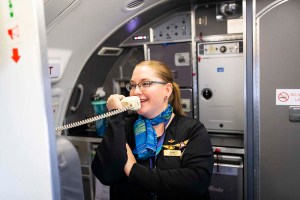
“Honestly, I just knew I was going to keep doing it all. I was always looking forward to going back to work. And the Army is such an exciting commitment.”
Has the Army given you skills that are helpful in flying?
“It’s made me more resilient when things get difficult. And since I’m a musician, I take that stage presence to work with me. Every flight is a new show.”
Was your dad supportive when you joined the Army band?
“He’s over the moon. Since I 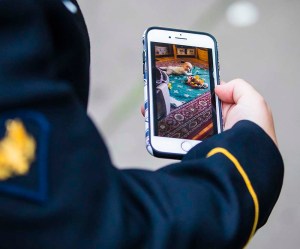 joined, I know him a little better. I would love to do 20 years and retire like my dad.”
joined, I know him a little better. I would love to do 20 years and retire like my dad.”
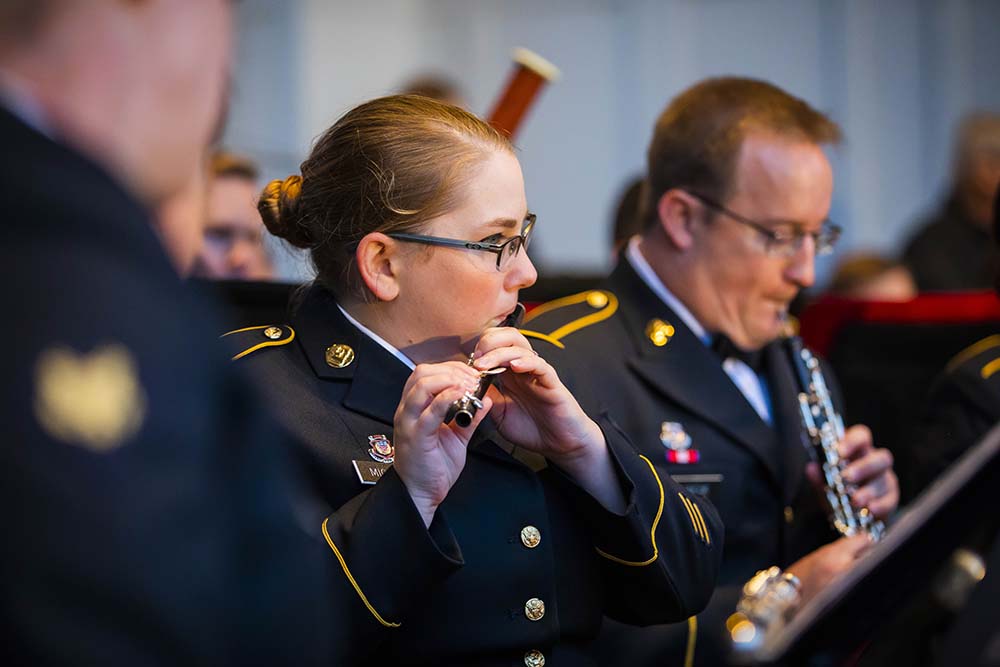
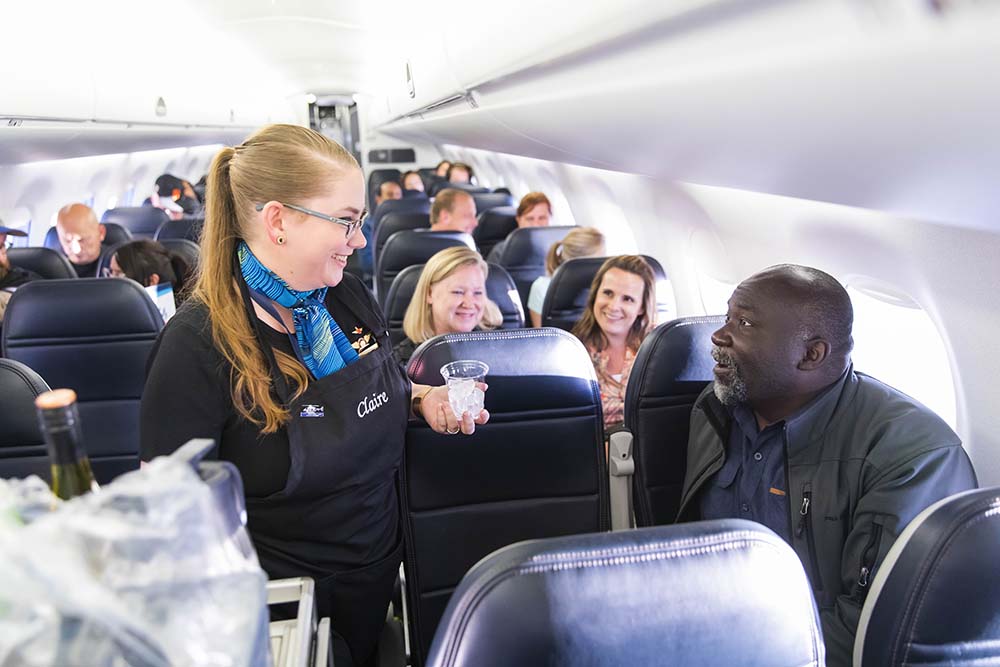
BRIAN AUCHMAN
Aircraft Technician, Alaska Airlines | Petty Officer, 2nd Class, Navy Reserve, Whidbey Island Naval Air Station
![]()
Auchman grew up as a self-described “military brat,” with grandparents and parents who served in the Navy and Air Force, so it felt right to join the Navy Reserve at 21. With more than eight years of service—four of them also working as an aircraft technician at Alaska’s Seattle hangar—Auchman thrives on a mix of work. This fall, he began a yearlong active deployment at Naval Air Station Whidbey Island.
What inspired you to volunteer?
“I knew that in the Navy I was likely to see more places. I’ve been to Japan, Bahrain, Italy, Greece, Spain. I got to go to Iwo Jima. It’s the chance to see and do things most people haven’t done.”
You work on 737s for Alaska and C-40s for the Navy. Is it a challenge to work on both?
“My civilian job helps me a lot in my military life. I have better knowledge of how the aircraft work. In the Navy, people often rotate, so they take advantage of my experience.”
Why volunteer for a yearlong deployment?
“I’ve always wanted to do active duty. I’ll get a chance to learn more of the leadership stuff.”
How long do you plan to serve?
“My ultimate goal is to stay in 20-plus years. There’s the honor of doing it, and there’s also the retirement that comes from staying in.”
RYAN SATHER
Managing Director, Horizon Air | Lieutenant Colonel, Marine Corps Reserve, Camp Pendleton
![]()

Sather joined the Marine Corps Reserve after high school, knowing he needed structure in his life. While attending Washington State University, he was recruited for officer training and jumped at the chance to go to flight school. His 11 years of active duty included flying CH-46 helicopters during the Iraq War and evacuating casualties in Gen. James Mattis’ unit. Six years ago, Sather moved back to the Northwest from San Diego to be closer to family and took a job with Alaska Air Group. Now a managing director for Horizon’s System Operations Control, he coordinates logistics in the center that handles flight plans, cancellations and delays. Sather stopped flying helicopters for the Marines a few years ago but returns to Camp Pendleton regularly to support aviation operations on West Coast bases. He’ll retire from the Marine Corps in April with more than 25 years of service.
How did the Marines prepare you for work in System Operations Control?
“It’s probably the most transferable job at Alaska. In the military, with flying, it’s all about logistics. It’s making sure that you’ve got a plan in place, you’ve got the right people in place, that the aircraft are airworthy—making sure that everybody is on the same sheet of music. SOC is basically the same thing. During irregular operations, I love seeing the team come together and figure out how to keep the operation going.”
What are the challenges in balancing civilian and military commitments?
“It’s a strain. But all my bosses have been supportive. It’s a testament to Alaska’s commitment to service and veterans that I’ve never once been asked, ‘Why are you going?’ Now, it’s me thinking, ‘Do I want to miss this soccer game or recital?’”
What do veterans bring back into the Alaska and Horizon workforces?
“I think you get the ability to pull yourself back and look at the bigger picture of things. It’s something the military trains very heavily on—that ability to detach and see the entire operation, not just see one little snippet of it.”
What will you miss when you retire from the Marines?
“For me, the countdown is on. You get a bit melancholy when you see the young Marines who are just starting off their career and you think back to yourself as a 19-year-old. I thought I was going to do it for four years and then never do anything in the Marine Corps again. The thing that you think about the most is not the easy days. It’s always the hard days and being part of that camaraderie and that team and working through those rough times. The deployments going overseas, being in combat – those are the things that I’ll miss the most. And that’s unique to the military. It’s not something that is easily replicated in the civilian world.”
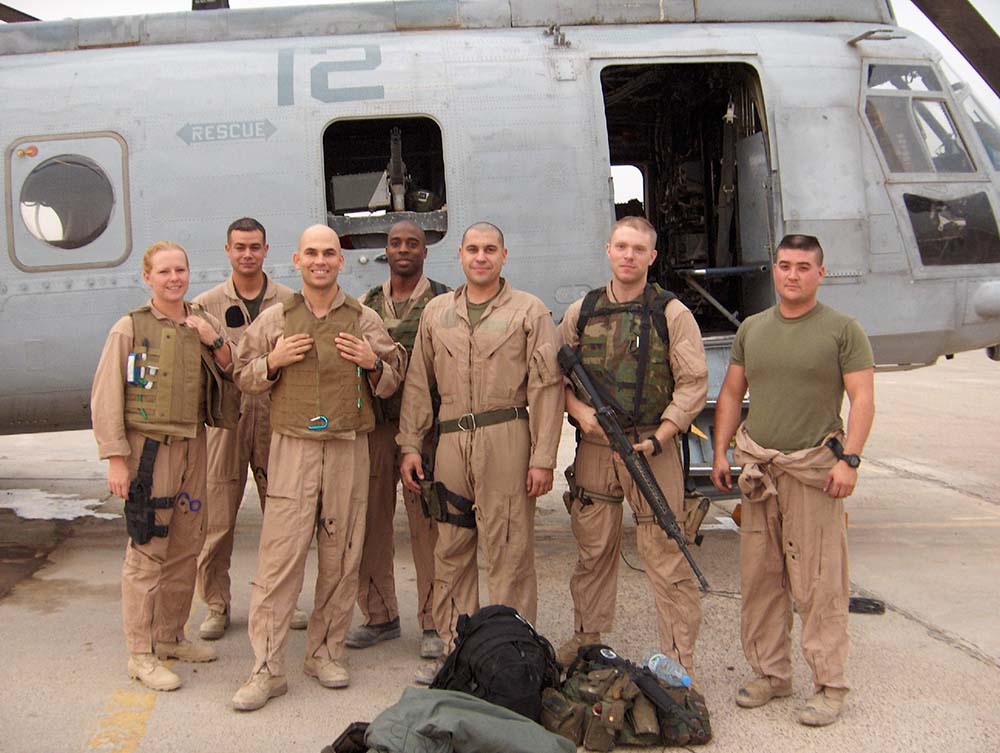
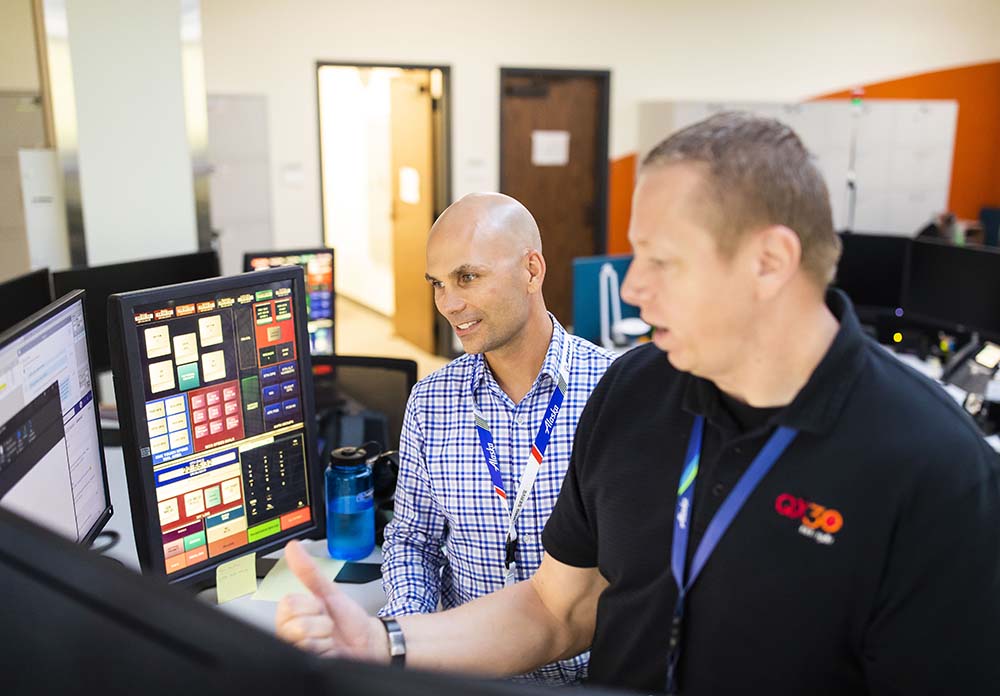
This story also appears in the November issue of Alaska Beyond Magazine.
